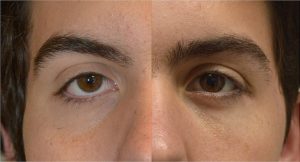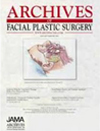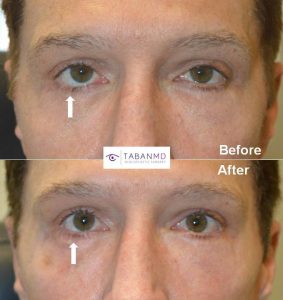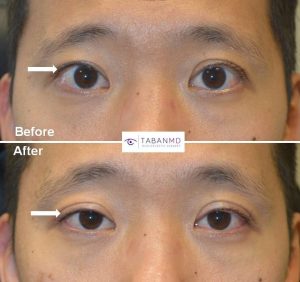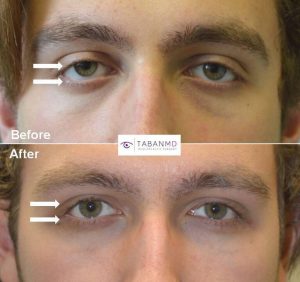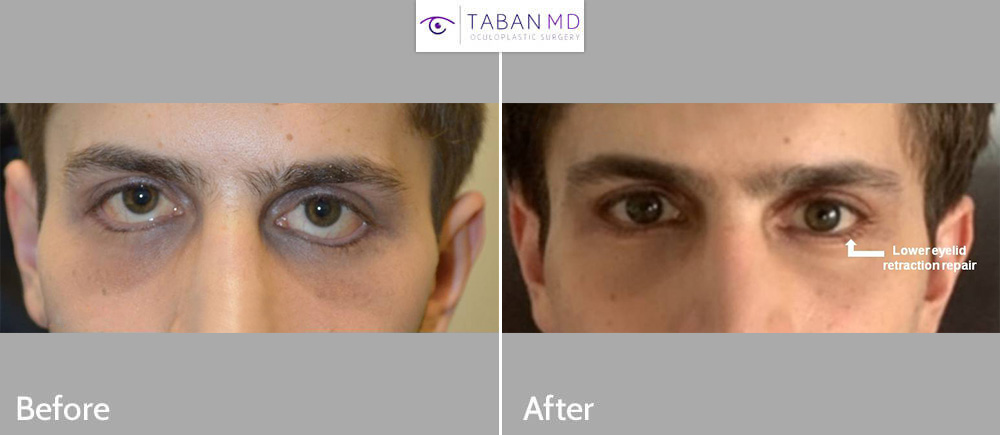Eyelid Retraction
What is Eyelid Retraction?
In this article, you will learn about Eyelid Retraction and see our patient results. What is Eyelid Retraction surgery? Eyelid retraction is the abnormal elevation of the upper eyelids and abnormal lowering of the lower eyelids. Normally, upper eyelids rest just below the upper border of the cornea/iris, while normal bottom eyelid rests at the lower border of the cornea/iris.
Treatment Options for Eyelid Retraction
The first line of therapy is ocular protection using frequent ocular lubrication (drops and ointment), bandage contact lens, etc. Oculoplastic surgery is inevitably needed since the eyes will get drier as time progresses. This eye condition surgery is done differently. For upper eyelid surgery, the levator muscle (responsible for lifting the upper eye fold) is cut to lower the upper eyelid. Oculoplastic surgery for retraction of the bottom eyelids works differently.
There are various surgical techniques, usually performed via a posterior (hidden) approach. At times, grafts and/or midface (cheek) lift may be needed to help elevate the bottom eyelid and reduce the scleral show.
Tightening of the lower eyelids is usually concurrently performed through canthoplasty where the outer eye corner is tightened.
Lower eyelid retraction surgery can help achieve more almond shaped eyes.
At times, orbital decompression may be necessary as an initial step (prior to this oculoplastic surgery) if big eyeballs or bulging eyes are forcing the lower eye to fold too low. Going back to the previous analogy, if someone’s big belly is reduced, their pants can come up higher!
Dr. Taban Beverly Hills Eyelid Retraction Treatment
Dr. Mehryar Ray Taban is a board-certified oculoplastic surgeon in Beverly Hills who has extensive experience and skill regarding the treatment of eyelid retraction. To learn more about the different treatment options for abnormal eyelid elevation, contact Dr. Taban today to schedule a consultation.
What Causes Eyelid Retraction?
There are various causes of this eye condition, including congenital, thyroid eye disease (Graves’ disease), trauma, and prior surgery. Most common cause of retraction of the upper eyelids is thyroid disease followed by genetics. The most common cause of lower eyelid retraction is from complications from prior lower blepharoplasty (post-blepharoplasty retraction), where either scar tissue developed and/or if too much skin was excised from the bottom eye fold. (Patient with prominent bulging eyes (negative vector) are at greater risk.)
This eye condition can appear as eye rounding and scleral show and very importantly it results in surgical (unnatural) eye and facial appearance. It can lead to chronic eye conditions including dry eyes, excessive tearing, redness, burning, and blurred vision.
Another common cause of retraction of the lower eye fold is genetics, where the lower eyelids are too low with scleral show. These patients often complain about their eye shape while desiring more almond shaped eyes. They want surgery to correct the scleral show.
It is important to understand that sometimes large eyeballs or bulging eyes (negative orbital vector) can force the bottom eyelids to be too low, which means sometimes the eyeballs have to be set back (through orbital decompression) to allow the lower eyelids to come up. A good analogy to consider is someone’s pants can fall down if the belly is too big!

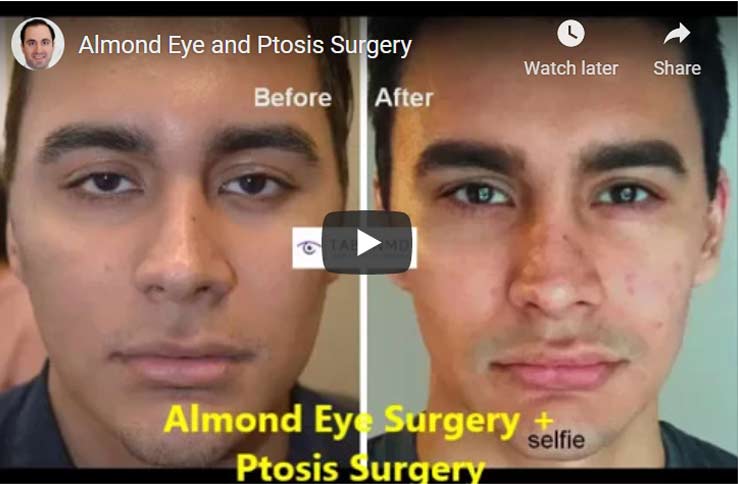
Read Dr. Taban's manuscript about Lower Eyelid Retraction Surgery Without Spacer Grafts.


Read Dr. Taban's Manuscript about Combined Orbital Decompression and Eyelid Retraction Surgery.
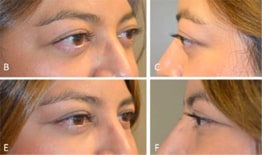
Read more about Dr. Taban's manuscript about Lower Eyelid Retraction Surgery.
Read Dr. Taban's manuscript about En-Glove Approach to Eyelid Retraction Surgery with Alloderm and Dermis-Fat Grafts.
Read Dr. Taban's manuscript about Aesthetic Lateral Canthoplasty.
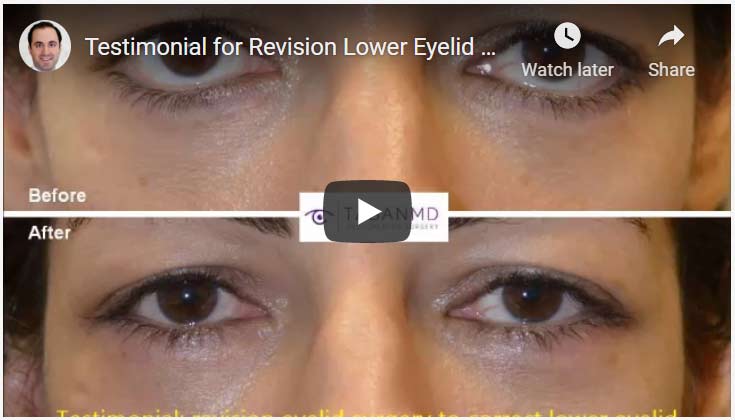
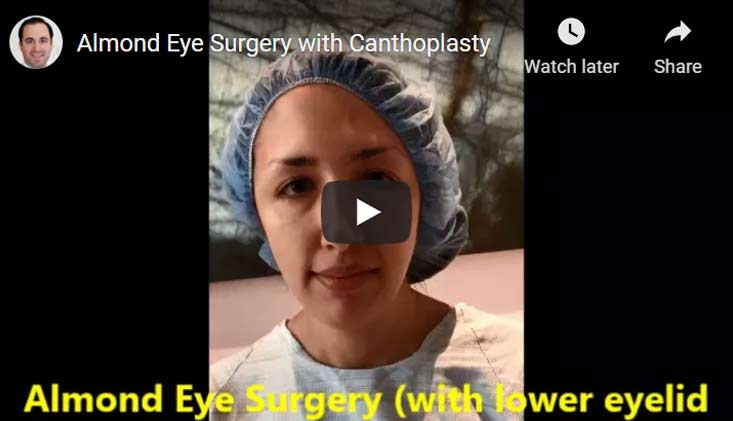
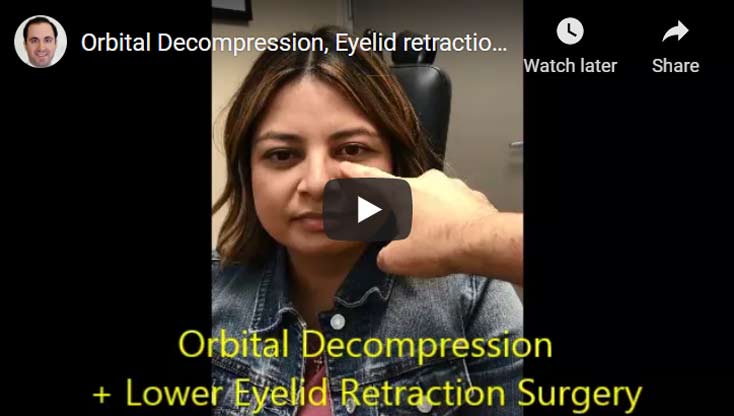
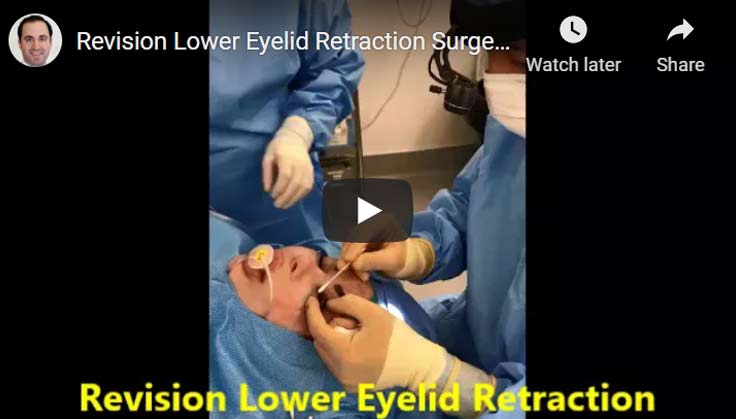
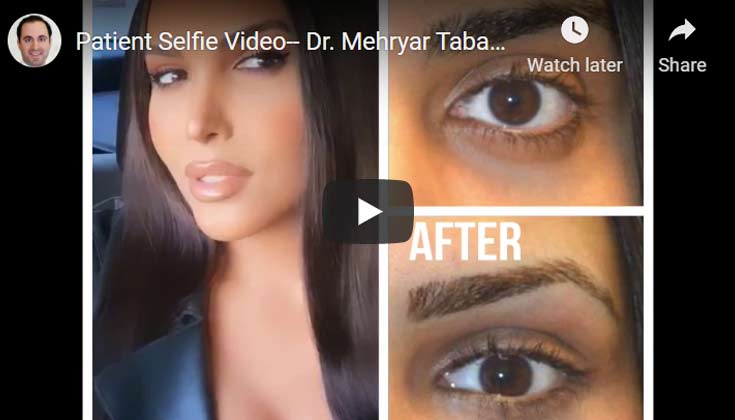
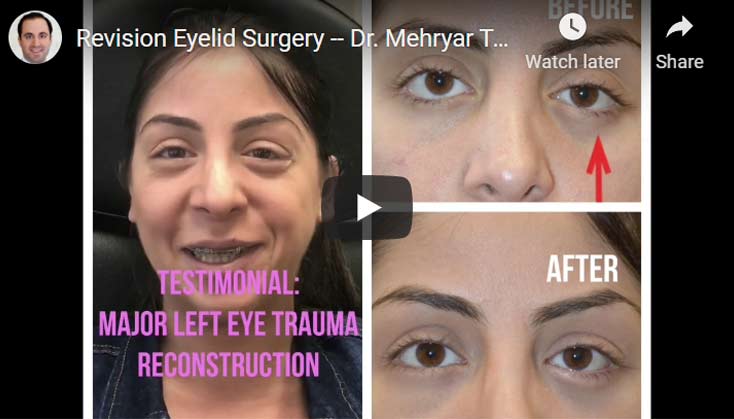
Addition information on oculoplastic surgery can be found on AAO.org.
Dr. Taban is an expert LA oculoplastic surgeon, using minimally invasive techniques, helping patients locally and around the world with this difficult problem, in his 2 offices in the greater Los Angeles area (Beverly Hills and Santa Barbara).
Before & After Photos
I had severe lower eyelid retraction caused by a prior fat re-positioning surgery last year in another country. I felt hopeless and very depressed because of my look and because I knew that it’s gonna be very difficult to fix the damage. After talking with 3 other oculoplastic surgeons I chose Dr. Taban… I had reconstructive lower eyelid retraction surgery with spacer graft and canthoplasty 4 months ago and finally I started to look like my old self again. Thank you Dr. Taban.
Dr Taban is genius at fixing lower eyelid complications. My lower eyelids were destroyed by a very prominent Great Neck plastic surgeon. I suffered severe lower eyelid retraction and bilateral ectropion … I was forced to tape my lower eyelids up day and night for 2 years while the original surgeon tried various ways to correct his bad work. I finally reached a point where I knew it would take a miracle… After being told by various oculoplastic surgeons that there was nothing that could be done … I flew out to Los Angeles… To make a long story short Dr. Taban performed the impossible. … I have no doubt that Dr. Taban is the #1 oculoplastic surgeon in the world because of the absolutely stunning work he did… I should also point out that Dr. Tabans aesthetic work around the eyes is also second to none. … Quite simply put, he is the best there is!
If you are searching for an Oculoplastic Surgeon to correct a botched blepharoplasty then look no further than Dr. Ray Taban. My story is long and quite complicated… I had the correctional surgery by Dr Taban and I love it! I can’t even begin to tell you how grateful I am to have found Dr. Taban. He is an amazing Oculoplastic surgeon who is a true artist and his scalpel is a wand… Dr. Taban is a genius… I am absolutely thrilled with the results and interestingly not only are my eyes repaired, I think they look more attractive than before my first surgery. … Bottom-line- Dr. Taban is nothing less than outstanding! I am so grateful that I found him and now every time I look into the mirror I smile and I guarantee if you elect to have surgery with Dr. Taban you will be smiling as well.
Dr Taban gave me my life back. He corrected a surgery that I had years ago in the Netherlands and completely devastated me (retraction lower eye lids). It was a long journey, went to so many doctors in Europe and none of them could help me … I had a revision of the lower lids retraction and ptosis correction with orbital decompression by Dr Taban. I still cannot believe it when I look in the mirror… Dr Taban is a wonderful skilled doctor, the best.
I want to say a Big Thank to Dr. Taban, he just made a magical performance on my eyes!
My eyes … never were that much beautiful like now!!! I am so happy,!!!I really was so skeptical at the beginning but now I understand that this doctor just deserves more words to say!!! Very professional, magical doctor! Thank you so much!
Dr Taban literally gave me my life back, today was the first day I’ve left my house without sunglasses and I haven’t felt this normal in a long time. I have been to a handful of surgeons, one in the UK, and two in the USA, they have only made my problem worse. …For anyone who’s going through something similar, I wish for you to never lose hope, and travel to LA if you must, because it’s definitely worth the journey.

